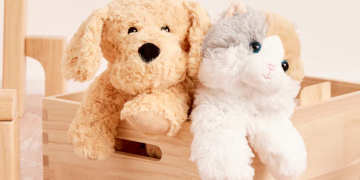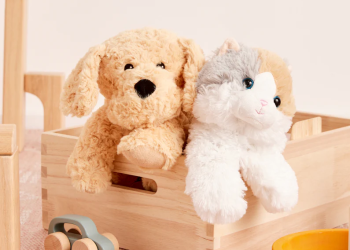Owning a pet brings immense joy, but it also comes with challenges, especially when dealing with behavioral issues. Understanding the root causes of these problems and addressing them with effective strategies is essential for a harmonious relationship with your furry friend. This guide explores practical solutions for common pet behavior problems.
1. Excessive Barking in Dogs
Why Dogs Bark
- Attention-Seeking: Dogs may bark to get your attention.
- Boredom or Loneliness: Lack of mental or physical stimulation can lead to barking.
- Territorial Behavior: Dogs often bark to alert you to perceived threats.
Solutions
- Provide Adequate Exercise: Regular walks and play sessions help tire your dog out, reducing the need to bark.
- Ignore Attention-Seeking Barking: Reward quiet behavior and avoid reinforcing barking by giving attention.
- Use the “Quiet” Command: Teach your dog to stop barking on command by saying “quiet,” then rewarding silence.
- Block Visual Triggers: Use curtains or frosted windows to reduce stimuli that provoke barking.
2. Litter Box Issues in Cats
Common Causes
- Dirty Litter Box: Cats are meticulous and may avoid using a soiled box.
- Location Problems: The litter box might be in a noisy or hard-to-access area.
- Medical Conditions: Urinary tract infections or stress can cause inappropriate elimination.
Solutions
- Maintain Cleanliness: Scoop the litter box daily and change the litter regularly.
- Choose the Right Location: Place the litter box in a quiet, private area.
- Visit the Vet: If issues persist, consult a veterinarian to rule out medical problems.
- Use Multiple Boxes: In multi-cat households, provide one box per cat plus an extra.
3. Destructive Chewing in Dogs
Why Dogs Chew
- Teething: Puppies chew to soothe sore gums.
- Boredom: Chewing helps dogs release pent-up energy.
- Separation Anxiety: Some dogs chew when stressed or anxious.
Solutions
- Provide Chew Toys: Offer durable toys designed for chewing.
- Supervise and Redirect: Interrupt inappropriate chewing and redirect your dog to a toy.
- Crate Training: Use a crate to prevent unsupervised chewing when you’re not home.
- Exercise: Ensure your dog gets plenty of physical and mental stimulation.
4. Scratching Furniture in Cats
Why Cats Scratch
- Marking Territory: Cats have scent glands in their paws.
- Nail Maintenance: Scratching helps cats remove dead nail layers.
- Stretching: It’s a natural way for cats to stretch their muscles.
Solutions
- Provide Scratching Posts: Place posts near areas your cat likes to scratch.
- Use Deterrents: Apply double-sided tape or a cat-safe deterrent spray to furniture.
- Trim Nails: Regular nail trims reduce the damage caused by scratching.
- Reward Appropriate Behavior: Encourage your cat to use scratching posts with treats or catnip.
5. Jumping on Guests
Why Dogs Jump
- Excitement: Dogs jump to greet people face-to-face.
- Attention-Seeking: Jumping often elicits a reaction, reinforcing the behavior.
Solutions
- Teach “Sit”: Redirect your dog to sit when guests arrive and reward calm behavior.
- Ignore Jumping: Turn away and avoid eye contact until your dog calms down.
- Practice Controlled Greetings: Use a leash during introductions to maintain control.
- Reward Calmness: Reinforce relaxed behavior with treats or praise.
6. Separation Anxiety
Signs of Separation Anxiety
- Excessive barking, whining, or howling
- Destructive behavior, such as chewing or digging
- Pacing or drooling when left alone
Solutions
- Desensitize Departures: Practice leaving for short periods and gradually increase the time away.
- Create a Routine: Stick to consistent feeding, walking, and departure times.
- Provide Distractions: Use puzzle toys or treat-dispensing devices to keep your pet occupied.
- Seek Professional Help: For severe cases, consult a veterinarian or animal behaviorist.
7. Aggression Towards Other Pets
Causes
- Territorial Instincts: Pets may feel the need to defend their space.
- Fear or Anxiety: Past negative experiences can trigger aggression.
- Resource Guarding: Pets may become aggressive over food, toys, or attention.
Solutions
- Introduce Gradually: When adding a new pet, introduce them slowly and in neutral territory.
- Supervise Interactions: Monitor playtime to prevent conflicts.
- Separate Resources: Provide individual food bowls, beds, and toys.
- Positive Reinforcement: Reward calm and friendly interactions.
8. Pulling on the Leash
Why Dogs Pull
- Excitement: Dogs are eager to explore their surroundings.
- Lack of Training: Many dogs don’t understand how to walk on a loose leash.
Solutions
- Use Proper Equipment: A front-clip harness or head halter can reduce pulling.
- Stop and Stand Still: When your dog pulls, stop walking until they return to your side.
- Practice Loose-Leash Walking: Reward your dog for walking beside you with a loose leash.
- Short Training Sessions: Practice in distraction-free areas before advancing to busier locations.
9. Excessive Meowing in Cats
Causes
- Attention-Seeking: Cats meow to get your attention.
- Hunger: They may vocalize to request food.
- Health Issues: Pain or discomfort can cause excessive meowing.
Solutions
- Rule Out Medical Issues: Visit a veterinarian to ensure there are no health concerns.
- Ignore Unnecessary Meowing: Only respond when your cat is quiet to avoid reinforcing the behavior.
- Interactive Play: Provide toys and playtime to reduce boredom.
- Scheduled Feeding: Stick to a consistent feeding schedule.
10. Fear of Loud Noises
Common Triggers
- Thunderstorms
- Fireworks
- Vacuum cleaners or other household appliances
Solutions
- Create a Safe Space: Provide a quiet, enclosed area where your pet can retreat.
- Use Calming Aids: Try pheromone diffusers, calming sprays, or anxiety wraps.
- Desensitization: Gradually expose your pet to recorded sounds of their trigger at a low volume, rewarding calm behavior.
- Stay Calm: Your pet will take cues from your demeanor, so remain relaxed.
Final Thoughts
Addressing pet behavior problems requires patience, consistency, and understanding. By identifying the root causes and applying these practical solutions, you can help your pet overcome challenges and create a happier, more harmonious household for everyone.












